Mary Sharratt's Blog, page 7
May 9, 2010
Eldritch Goings On: Saint Mark's Eve
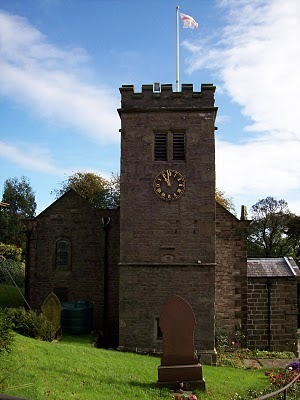
Saint Mary's Church in Newchurch in Pendle, as spooky a place as any to hold the Vigil of the Eve of Saint Mark.
One of the most intriguing English superstitions was the Vigil of the Eve of Saint Mark. Those of gothic sensibilities take note.
On April 24, the night before the feast day of Saint Mark the Evangelist, the morbidly curious gathered on the church porch between the hours of 11:00 pm and 1:00 am, in hope of seeing the ghosts of all who would die and be buried in the churchyard that co...
Published on May 09, 2010 01:41
March 30, 2010
Daughters of the Witching Hill Reader Review Contest
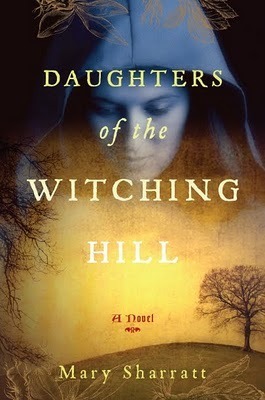
Win signed copies of all my books, plus an exclusive handmade piece of jewelry designed by Elise Mattheson.
How to enter:
1. Post your Insightful Reader Review of Daughters of the Witching Hill on one of the following online review sites:
Amazon.com,
Amazon.co.uk,
Barnesandnoble.com,
Borders.com, or
Powells.com
Then sign my guest book telling me about your review.
Entries must be posted by May 7, 2010.
Happy Reading!
Published on March 30, 2010 06:38
Pendle Witch Library
Pendle Witches: Further Reading on the Pendle Witches, Historical Cunning Folk, and Wisewomen
Fiction:
Harrison Ainsworth, The Lancashire Witches: A Romance of Pendle Forest (EJ Morten) (First published in 1849, written in dialect, very long, gothic, and dense.)
Robert Neill, Mist Over Pendle (A lovely novel for both adults and young adults but not very kind to the witches!)
Nonfiction, Primary Source:
Thomas Potts, The Wonderfull Discoverie of Witches in the Countie of Lancaster (Published in 161...
Fiction:
Harrison Ainsworth, The Lancashire Witches: A Romance of Pendle Forest (EJ Morten) (First published in 1849, written in dialect, very long, gothic, and dense.)
Robert Neill, Mist Over Pendle (A lovely novel for both adults and young adults but not very kind to the witches!)
Nonfiction, Primary Source:
Thomas Potts, The Wonderfull Discoverie of Witches in the Countie of Lancaster (Published in 161...
Published on March 30, 2010 06:29
The Charms of the Pendle Witches
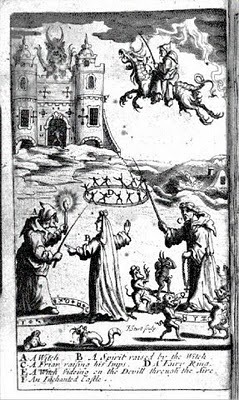
From Thomas Potts's A Wonderfull Discoverie of Witches in the Countie of Lancaster, the official trial transcripts:
Mother Demdike's family charm "to get drink":
Crucifixus hoc signum vitam
Eternam. Amen.
(Literal translation: the crucifix is the sign of eternal life.)
This charm to cure bewitchment is attributed to Chattox:
A Charme
Three Biters hast thou bitten,
The Hart, ill Eye, ill Tonge:
Three bitter shall be thy Boote,
Father, Sonne, and Holy Ghost
a Gods ...
Published on March 30, 2010 06:21
Daughters of the Witching Hill: What the critics are saying
Daughters of the Witching Hill
by Mary Sharratt
published April 7, 2010 by Houghton Mifflin Harcourt
"Gorgeously imagined . . . . Sharratt crafts her complex yet credible account by seamlessly blending historical fact, modern psychology, and vivid evocations of the daily life of the poor whose only hope of empowerment lay in the black arts."
-Publisher's Weekly, Starred Review
"What makes this story stand out are the strong voices of the two main characters, stalwart Bess Southerns (aka Demdike) ...
published April 7, 2010 by Houghton Mifflin Harcourt
"Gorgeously imagined . . . . Sharratt crafts her complex yet credible account by seamlessly blending historical fact, modern psychology, and vivid evocations of the daily life of the poor whose only hope of empowerment lay in the black arts."
-Publisher's Weekly, Starred Review
"What makes this story stand out are the strong voices of the two main characters, stalwart Bess Southerns (aka Demdike) ...
Published on March 30, 2010 06:04
Daughters of the Witching Hill: The Launch Party
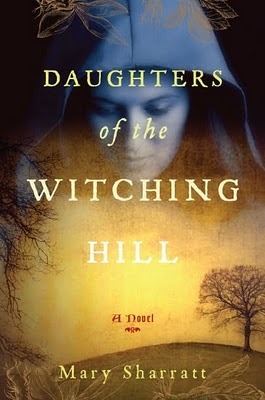
Daughters of the Witching Hill
published April 7 by Houghton Mifflin Harcourt
What a voice Mary Sharratt has. She brings a haunting, ancient story to life.
--Karleen Koen
The wild, brooding landscape of Pendle Hill in Lancashire, Northern England, my home for the past seven years, gave birth to my new novel, Daughters of the Witching Hill, which reveals the true and unforgettable story of the Pendle Witches of 1612.
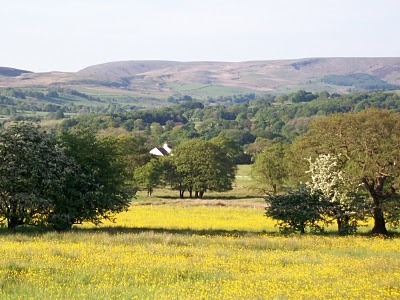
Take a sneak peak of the novel
Who were the Pendle Witches of 1612?
Read what ...
Published on March 30, 2010 05:56
March 23, 2010
New video, live events, audio rights, and new reviews
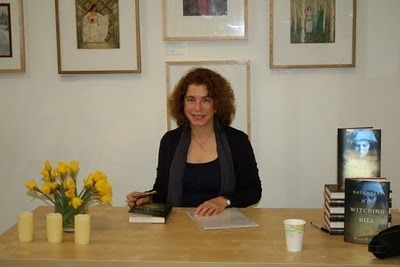
I've just returned from New York and the stellar Virginia Book Fesitval.
In Brooklyn, artist and author Kris Waldherr hosted my exclusive prepublication reading and signing at her Art & Words Gallery, pictured above. You can see some of her gorgeous art work on the wall behind me. You can also see how beautiful the finished book jacket for DAUGHTERS OF THE WITCHING HILL is. It shimmers like a hologram and completely conveys the essence of the magic I sought to capture in the novel.
The event wa...
Published on March 23, 2010 05:52
March 8, 2010
King James I: Royal Demonologist
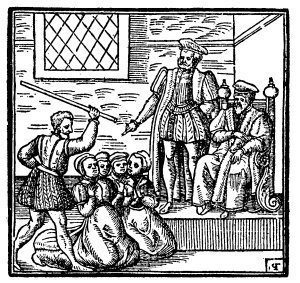
Even by the standards of his age, King James VI of Scotland, who later became James I of England, stood out as a deeply superstitious man, ruled by his obsession with the occult.
Before his reign, witchcraft persecutions had been rare in Britain. But that all changed in 1590 when James personally oversaw the trials by torture for around seventy individuals implicated in the North Berwick Witch Trials, the biggest Scotland had known. The witches’ alleged crime? Raising a storm which nearly sank James’s ship when he sailed home from Norway with his new bride, Anne of Denmark. Possibly dozens of accused witches were executed by burning at the stake, although the precise number is unknown.
In 1597 James published his book, Daemonologie, his rebuttal of Reginald Scot’s skeptical work, The Discoverie of Witchcraft, which questioned the very existence of witches. Daemonologie was an alarmist book, presenting the idea of a vast conspiracy of satanic witches threatening to undermine the nation.
In 1604, only one year after James ascended to the English throne, he passed his new Witchcraft Act, which made invoking spirits a crime punishable by execution.
James’s ideas on witchcraft were later popularised by Shakespeare’s play Macbeth, which had its premier performance at James’s court in 1606. For the first time in history, English drama depicted witches gathering in secret for their own malign rituals and scheming.
The weird sisters, hand in hand,
Posters by the sea and land,
Thus do go, about, about,
Thrice to thine, and thrice to mine,
And thrice again, to make up nine.
Peace, the charm's wound up.
(Macbeth, I,iii, 32-37)
According to Instruments of Darkness by James Sharpe, this terror of supposed witch covens was the driving factor mobilising 17th century witch hunts. Previously the belief in witches’ covens had been a Continental European concept, foreign to traditional British folk magic, practised by individuals, not collectives. No evidence exists that supposed witches in Early Modern Britain organised themselves into collectives, and nothing of the black mass can be traced to England at this time.
It wouldn't take long before life began to imitate James's and Shakespeare's dark fiction.
Six years on, in 1612, the King’s paranoid fantasy of satanic conspiracy, planted in the minds of local magistrates hoping to earn his favour, culminated in one of the key manifestations of the Jacobean witch-craze: the trials of the Lancashire Witches of Pendle, which resulted in the execution of seven women and two men. According to Thomas Potts's The Wonderfull Discoverie of Witches in the Countie of Lancaster, the official trial transcripts, the accused allegedly gathered "according to solemn appointment" at Malkin Tower on Good Friday, "with great cheer, merry company and much conference," and then plotted to blow up Lancaster Castle with gunpowder. As far-fetched as this scenario seems--where would a group of impoverished commonfolk even get hold of gunpowder--it fed directly into James' fears following the Gunpowder Plot of 1605.
James’s unfortunate legacy extends even into our age. The King James Bible, completed in 1611, saw the scriptures rewritten to further the King’s agenda. Exodus 22:18, originally translated as, “Thou must not suffer a poisoner to live,” became “Thou must not suffer a witch to live.”
Speaking of the Pendle Witches, local preparations for commemorating the 400th anniversary of the 1612 Lancashire Witch Trials are underway. Read more about it here.
Published on March 08, 2010 02:17
•
Tags:
king-james-i, pendle-witches, witch-hunting
King James I: Royal Demonologist

Even by the standards of his age, King James VI of Scotland, who later became James I of England, stood out as a deeply superstitious man, ruled by his obsession with the occult.
Before his reign, witchcraft persecutions had been rare in Britain. But that all changed in 1590 when James personally oversaw the trials by torture for around seventy individuals implicated in the North Berwick Witch Trials, the biggest Scotland had known. The witches' alleged crime? Raising a storm which nearly sank...
Published on March 08, 2010 02:14
January 25, 2010
On making the 17th century book video

An increasing number of authors are creating video trailers to promote their books. Historical fiction gives an added depth and flavour to the process, a chance to show off your period garb or highlight the elements of history that your book draws out.
I was very fortunate that my publisher, Houghton Mifflin Harcourt, arranged for me to create such a trailer for my forthcoming novel, Daughters of the Witching Hill . The history of the Pendle Witches is so rich in its own right, it's just crying...
Published on January 25, 2010 11:36



